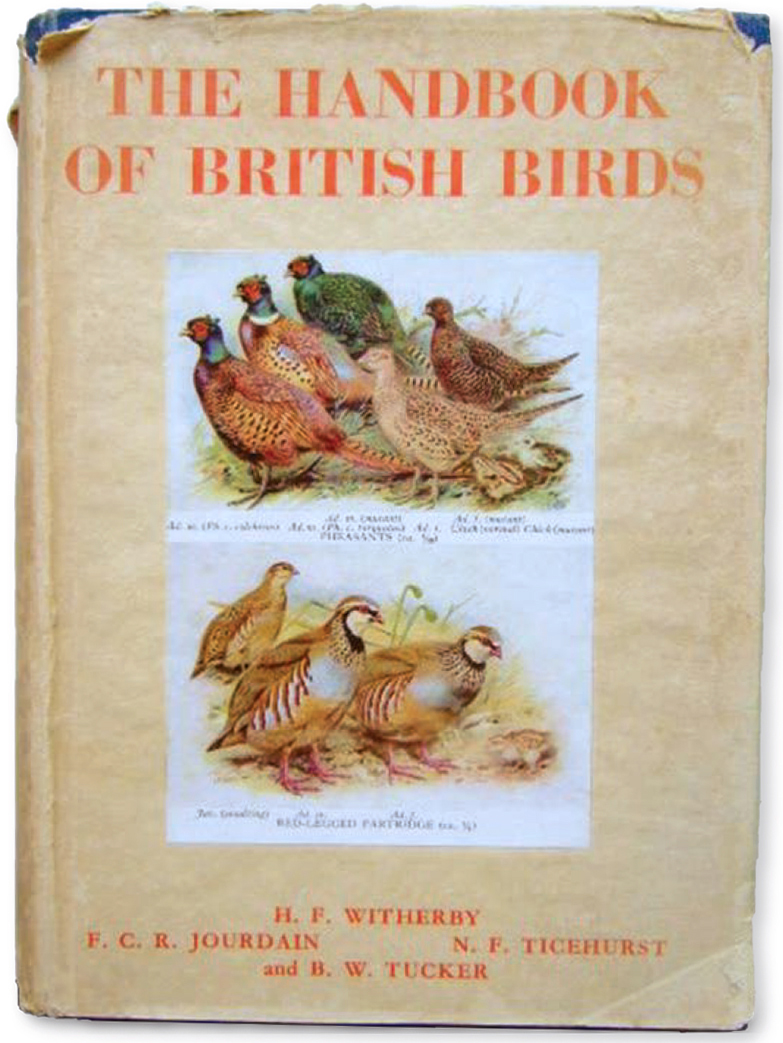56 : Witherby’s Handbook of British Birds
1938–41
‘Witherby’ was an ambitious and comprehensive avifauna of Britain, discovered by many a nascent birder in his or her school or public library, and littered throughout with arcane taxonomic and vagrant minutiae – truly the source of the aficionado’s attention to detail.
A giant of his ornithological era, Harry F Witherby’s many achievements included the founding of the journal British Birds (see pages 96–97) and the British Trust for Ornithology, as well as being awarded an MBE. But no less remarkable was the primary pre-war reference to British birds which he co-authored, the erudite but unwieldy five-volume The Handbook of British Birds. He may have shared the credits with the Rev F C R Jourdain, Norman F Ticehurst and Bernard W Tucker, but Britain’s first truly comprehensive avifauna was often simply known as ‘Witherby’, being an expanded version of the editor’s earlier two-volume Practical Handbook of British Birds (1919-24). Published by Witherby’s family publishing firm, The Handbook rapidly became the essential ornithological reference work.
Colour and black-and-white plates illustrated virtually all the species recorded in Britain, as well as their nests and eggs, while the complete taxonomic history of all listed forms was given in detail, including every subspecies recorded in Britain. It was also the first one-stop itemisation of all of Britain’s rare vagrants, with eye-opening and appetite-whetting foreign gems in every volume. In British Birds and these volumes the true roots of the British twitching scene can be found, along with the parochial claiming of ‘our’ subspecies; debates still go on regarding Scottish Crossbill, Red Grouse and even the ‘British’ Dartford Warbler.
So illuminating and detailed was the work that it ran to eight impressions, the last being in 1958, as well as a concise edition in 1952 entitled The Popular Handbook of British Birds, written by P A D Hollom. A further spin-off in 1960 was The Popular Handbook of Rarer British Birds, also by P A D Hollom and featuring the rarest species which had been omitted from the earlier abridged volume.
Ultimately, however, more competition was on the way. The following decade saw the release of the first in the geographically more expansive nine-volume series Handbook of the Birds of Europe, the Middle East, and North Africa: the Birds of the Western Palearctic, more simply known as BWP. Launched in 1997, this encyclopaedic leviathan eventually superseded The Handbook, particularly as birders’ eyes were opened by affordable travel to the Continent and awareness of the biogeographical discreteness of their home region.
Further handbooks to the avifaunas of other continents were equally eye-opening, culminating in Lynx Edicions’s The Handbook of the Birds of the World which began serial publication in 1992 with the ambitious aim of covering all the world’s birds. It is likely to remain the acme of such works, though it is a great investment in book format; HBW has been ‘reborn’ online as a constantly updated database.
Nonetheless, The Handbook’s formative inspiration to several generations of birders and ornithologists cannot be underestimated, and there is still fascination and information to be found amidst its fusty minutiae to this day.
